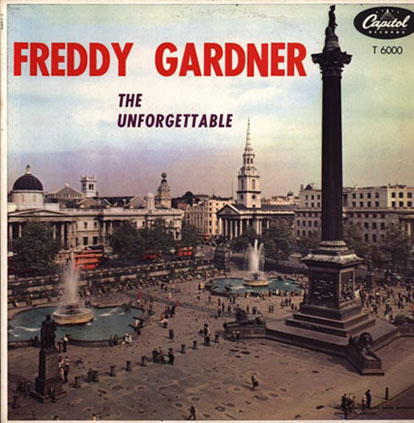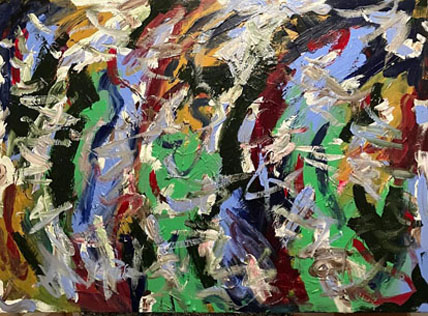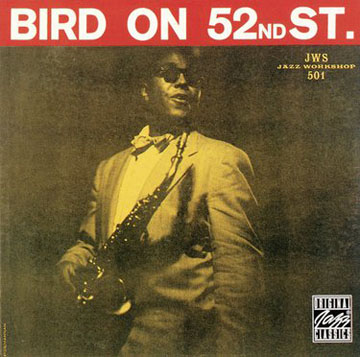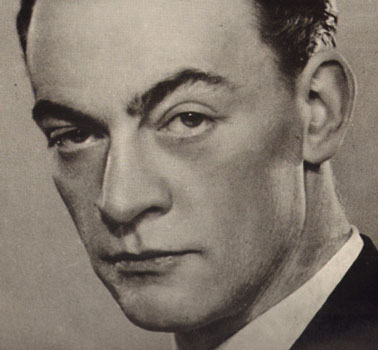Back on August 21, 2016 (when Barack Obama was still happily President of the USA) one so-called Wile E. Coyote reviewed a two-CD collection of some 51 tunes by the noted UK alto (and other) saxophone artist Freddy Gardner (1910–1950).
Mr. Coyote wrote : “Freddy Gardner had been the consummate alto saxophonist in England during the dance band years … Granted, those interested in alto saxophone recordings expecting something similar to Charlie ‘Yardbird’ Parker will be disappointed, as Gardner plays more in a ‘concert’ style.” He was “nonetheless a virtuoso on his instrument.”
* * * *
I grew up in a half-old-school Canadian world of the late 1950s and early 1960s where Freddy Gardner and not Charlie Parker was the exemplary alto saxophone artist. It was not until my late 20s and even 30s, I think now (in my late 70s), that I finally seriously discovered the altogether awesome brilliance of Charlie Parker — on recordings and in Omnibook transcriptions.
All too many years after this discovery, I certainly know that, whatever else, Freddy Gardner was not Charlie Parker’s successor (he was 10 years older, for one thing, and died about five years before) or even a serious precursor. There are nonetheless a few intriguing parallels. (Once you set aside the disparate hard facts that Freddy Gardner was born in London, England in 1910 and Charlie Parker in Kansas City, Kansas in 1920.)
To start with, both men were recognized more or less early in their careers as the leading alto saxophone players in their respective musical worlds. Gardner was (again) “the consummate alto saxophonist in England during the dance band years” (1930–1950 in Gardner’s particular case), with special reference to London. Parker was the same in the USA, with special reference to New York City (where he was happiest and would finally die), c. 1940–1955.
Tragically early deaths in their 30s is something else that Freddy Gardner and Charlie Parker shared. Parker died in his mid 30s, Gardner when he was 39.
* * * *
There is one clear enough difference on the shared early deaths. In his Boss Tom Pendergast’s Kansas City youth (in “The Paris of the Plains”), Charlie Parker was addicted to hard drugs by his mid teens. (On the plus side this may be part of what fueled the legendary “11-15 hour” daily practice regime of his later teens, that forged his astounding instrumental technique?)
By his early 20s the “Bird” who was especially fond of chicken had acquired other voracious appetites. His logical enough death at 34 had a lot to do with the abuse he subjected his body to. (The attending physician when Parker died at the apartment of the Rotshchild heiress and New York jazz patroness Pannonica de Koenigswarter — honoured by Horace Silver’s “Nica’s Dream,” among more than a few other tunes — is said to have estimated his age as early 60s!)
Freddy Gardner seems more of a gifted boy from even comparatively prosperous branches of the London working class (or “lower middle class”?) between the two world wars. (Though Bird owed a parallel debt to his “well situated” head-nurse mother in Kansas City.) Gardner also seems to have married only once early on and become a family man.
The unforgettable Freddy Gardner apparently suffered an altogether unexpected and unexplained but fatal stroke just before he turned 40, while fixing his son’s bicycle. The photographic images we can now see online (but not when I first listened to Freddy Gardner on one of my father’s LPs) similarly suggest an upwardly mobile English working guy on the make, who is brilliant at his job and (maybe not so?) quietly knows it.
* * * *
The vinyl LP of my father’s that I first listened to some classic recordings of the English master of the alto saxophone on was called “Freddy Gardner The Unforgettable” (with a photo of mid 20th century Trafalgar Square in London on the album cover : as in illustration at beginning above).
My father alas died long ago and this particular record seems to have vanished from the collection of his LPs I still have. (I blame my brother the piano player, also alas now deceased.) Happily enough in the Age of the Internet, however, you can still buy a used copy of “Freddy Gardner — The Unforgettable Capitol Records LP” on amazon.com, for $35 US.
If the $35 seems a bit stiff, in the Age of the Internet six of the eight tunes on “Freddy Gardner — The Unforgettable” have also been thoughtfully placed on YouTube by Graham Miles, as “SIX CLASSIC FREDDY GARDNER SOLOS — Peter Yorke and his Concert Orchestra.”
Mr. Miles begins his helpful written notes with : “In the last two years of his life, England’s unforgettable genius of the saxophone Freddy Gardner (1910-1950), recorded six classic solos with Peter Yorke and his Concert Orchestra … The first session was on 29th April, 1948 … with the final recording on 30 January, 1950.”
“Freddy Gardner — The Unforgettable” also includes two tunes where he is accompanied by just “piano and guitar.” Though missing, as it were, from SIX CLASSIC FREDDY GARDNER SOLOS, these are available as single items on YouTube ; see “Smoke Gets In Your Eyes” and “Stardust” — two good introductions to the classic alto saxophone artistry of Freddy Gardner.
* * * *
There is much else on YouTube by or somehow featuring Freddy Gardner — and among the 51 tunes by the noted UK alto (and other) saxophone artist on the two-CD collection reviewed by Wile E. Coyote back in the summer of 2016.
What much of this shows is a rather different Freddy Gardener from the genius of the alto saxophone who recorded some classic “concert” performances in the last two years of his life. (Many of the originals of which, it seems, were first heard on BBC Radio, where Peter Yorke and his Concert Orchestra were something of a fixture after the Second World War?)
As often as not in this more diverse work from the 1930s (and 1940s) Freddy is a band leader (and arranger apparently) and/or is playing clarinet or tenor or baritone as well as alto saxophone. He is improvising like a jazz musician (in some ways). And as often as not he is something almost opposite to “the world’s sweetest saxophonist” alluded to by Hector Stewart in his liner notes for “Freddy Gardner — The Unforgettable.”
Here are an interesting enough half dozen examples of this Gardner genre on YouTube : “It’s D’Lovely” (Freddy Gardner And His Swing Orchestra) ; “I Want To Be Happy” (Freddy Gardner and his Swing Orchestra) ; “Limehouse Blues” (with larger orchestra) ; “The Dipsy Doodle” (same larger orchestra) ; “The Japanese Sandman” (with rhythm section?) ; and “You Can’t Stop Me from Dreaming” (same larger orchestra).
* * * *

When you look at Freddy Gardner’s recorded work in this more diverse way, the most apt parallel between the awesome world of the Yardbird and the alto saxophone virtuosity on “Freddy Gardner — The Unforgettable” from the late 1940s is the “Charlie Parker With Strings” recordings, also from the late 1940s.
Fortunately for we who now dwell in the Age of the Internet some excellent operation out there somewhere has posted “Charlie Parker With Strings: Complete Master Takes” on YouTube. This presents 24 recordings of Bird with violins, cellos, and so forth, from 1949 and 1950.
Parker’s work with strings (and oboes too etc) was once (when I was younger) viewed as not serious Yardbird modern jazz. But he liked this rather brief side of his musical life himself. And it now seems to get a somewhat more welcome hearing from jazz critics.
Whatever else, the tunes from “Charlie Parker With Strings” on YouTube compare and contrast nicely with “SIX CLASSIC FREDDY GARDNER SOLOS” on YouTube. Listening to these two postings back to back could make an intriguing exercise that reveals subtle features of life just after the Second World War in London and New York City.
Meanwhile, in the obvious comparison between two masters of the craft that arises in any such exercise there is utterly no doubt in my mind that Charlie Parker is by some distance the greater alto saxophone player.
Bird is brilliant, beautiful, and cool, where Freddy is masterful but almost too sweet. And then the comparative geographic remoteness of African America in England between the world wars makes even Freddy’s more diverse improvisations of the 1930s and 1940s altogether too square.
(While Bird anticipates a later lionization, with his mixed race African Indigenous American natural heritage, nicely if also insidiously nurtured by the Paris of the Plains in Kansas City, 1928–1938 — a place of learning as well for President Harry Truman, 1945–1953.)
At the same time, as Miles Davis once said (I think) nobody is as good as Bird. And that certainly in my book applies to the world of the alto saxophone generally, well beyond “jazz.”
In the end Freddy Gardner’s contribution to alto saxophone playing still commands some attention — even if no one quite wants to play the way he did now. (At least no one I’ve heard for quite a while.)
In fact I checked over my aging LP collection in my basement music room this morning. I have more than a few Charlie Parker albums, but still nothing by Freddy Gardner. I’m starting to think about paying the $35 US on Amazon, for a used copy of “Freddy Gardner — The Unforgettable.” And who knows just where this thought might end?
* * * *
POSTSCRIPT : On the “Street Scene” Alto Saxophone of Jay White, who “made very few recordings, but a lot of people liked them.” I cannot leave the subject of Freddy Gardner without quickly noting another much less famous but still notable alto saxophone giant from my own late 1950s/early 1960s North American tutelage.
I am indebted to Donald’s Encyclopedia of Popular Music online for a good short description of the man in question : “WHITE, Jay … (James Anthony White, 1917-76) American dance-band musician who played all the reeds, but was best known for his alto saxophone. He made very few recordings, but a lot of people liked them. Jay White grew up in Boston, graduated from Commerce High School and the Bentley School of Accounting, but chose music as a career.”
Jay White was recommended to me by my first saxophone (and clarinet) teacher, as an alto player whose sound might be the kind of not-quite-Freddy-Gardner example that had been more vaguely suggested by my father (whose alto saxophone I was taking lessons on, and who didn’t quite believe in my early efforts to emulate the cool sound of late 50s/early 60s youth).
I still have the Jay White LP I purchased back then, called “Street Scene” — and with a 1950s auto accident at a deep urban intersection on its cover. I listened to this album again for an umpteenth time this morning. (I was pleasantly surprised by how good the sound still is on a now more than 60-year-old vinyl LP.)

Like Freddy Gardner on alto, Jay White is a master of long notes, with amazing breath control. He has a less rich vibrato than Freddy — a slightly more hip tone but still in the somewhat sweet zone : far away from the beautiful cool sound and restrained vibrato of even the concert version of Bird at his best, in “Charlie Parker With Strings.”
At any rate I still can’t see this as quite the way I’d like to play myself, if I were in some if-you-build-it-they-will-come dream. But I am glad I still have Jay White’s Street Scene album. In the Age of the Internet two of its most notable alto saxophone classics are also accessible on YouTube : “Street Scene” (the title tune as it were) ; and the still iconic (if lately too little performed) “Harlem Nocturne” (written by Earle Hagen for UK band leader Ray Noble, who also played some role in both Gardner and Parker careers!).
Tags: "Bird", alto saxophone greats, Charlie Parker, Freddy Gardner, Graham Miles, Harry Truman, Jay White, Kansas City, Kansas City music, London music, New York jazz, Nica's Dream, Paris of the Plains, Peter Yorke, Ray Noble













Recent Comments